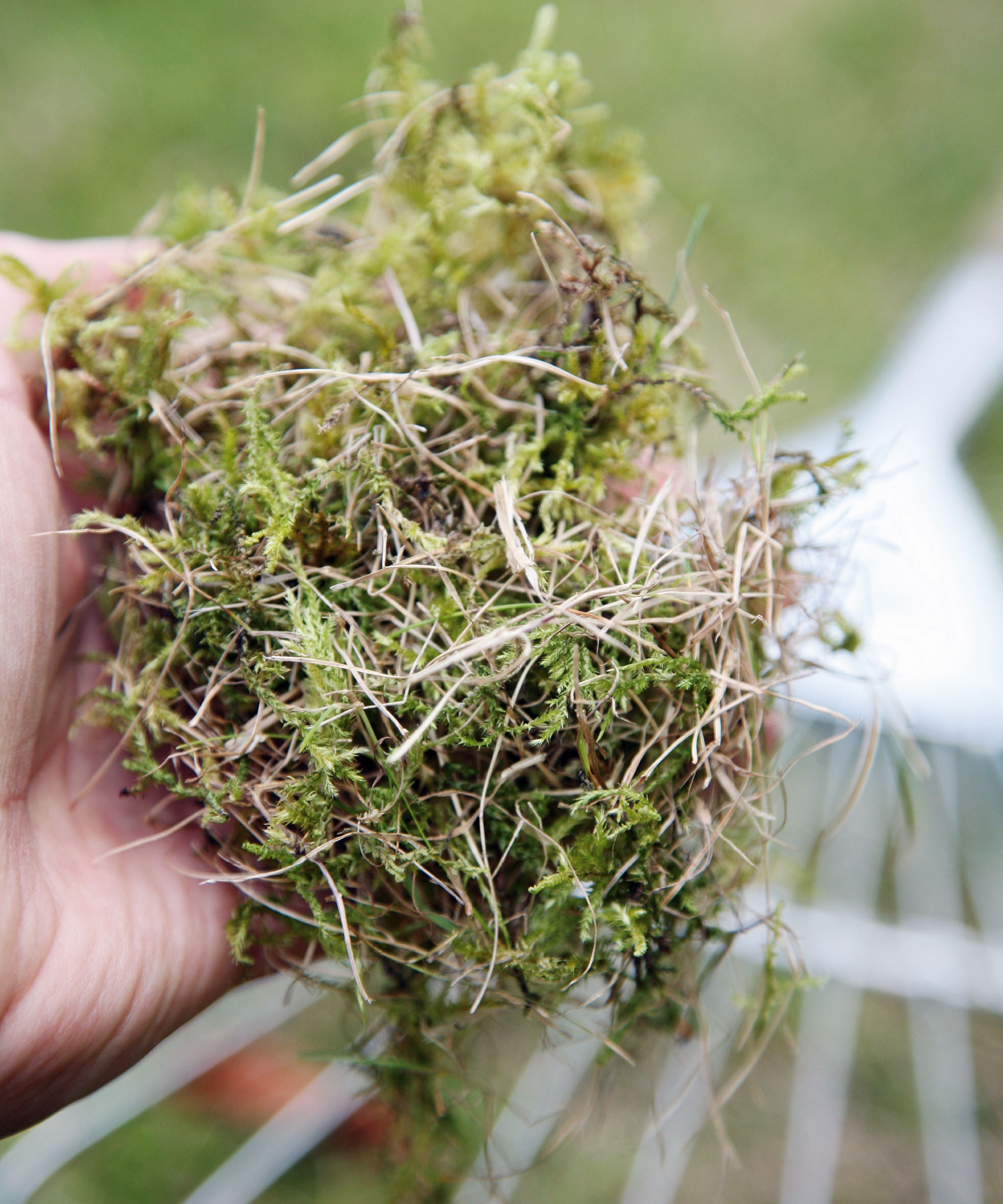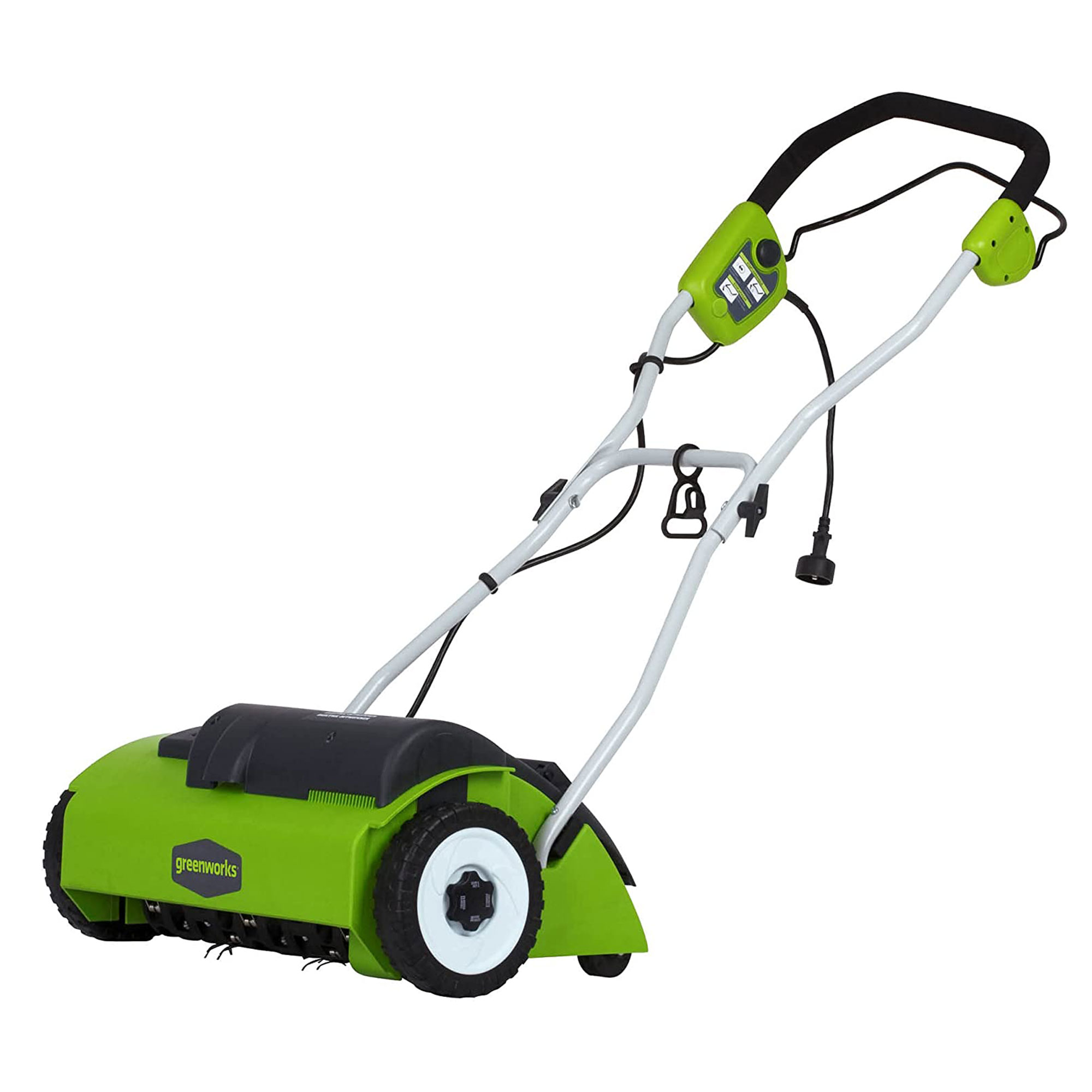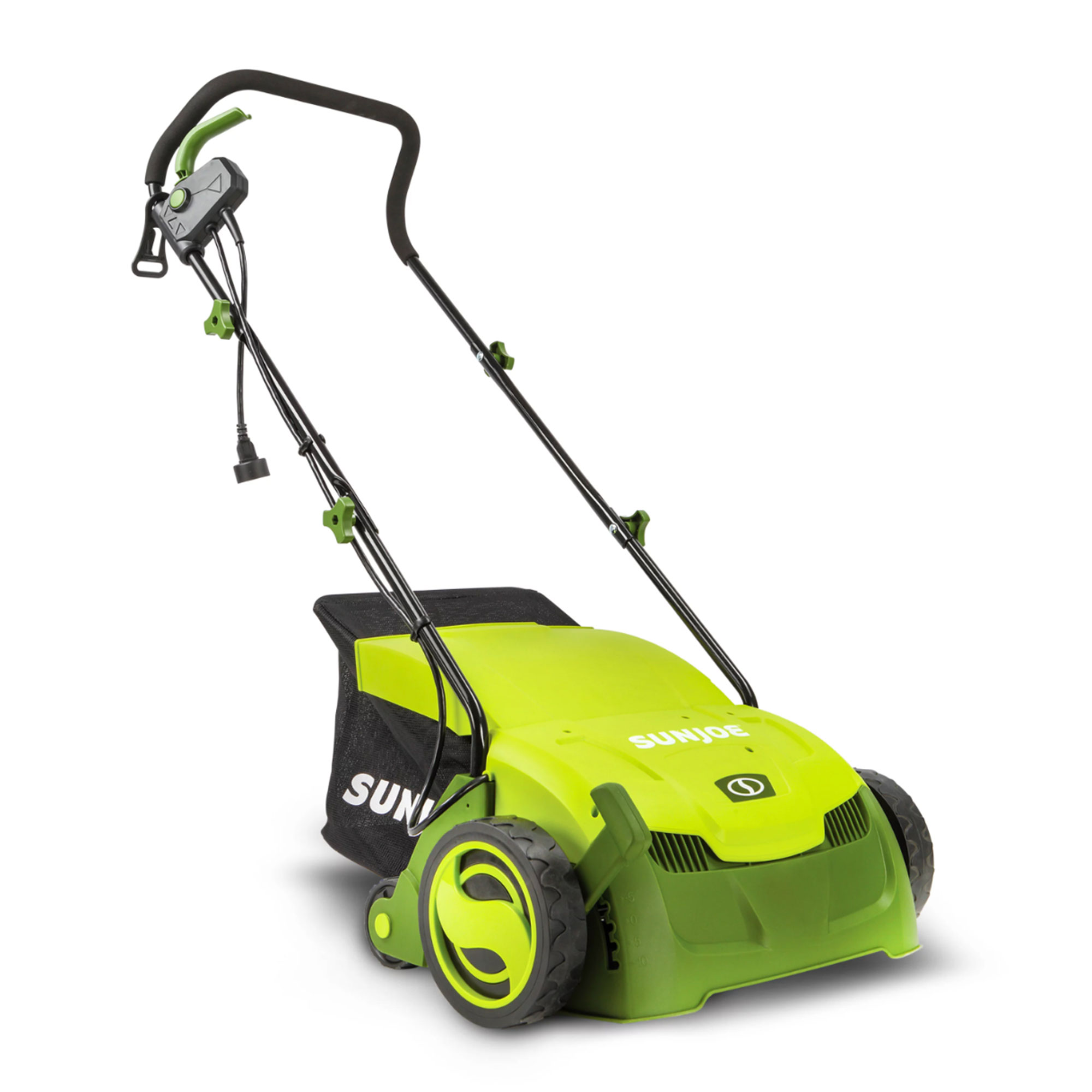Scarifying vs dethatching – experts explain the differences and advise which is best for your lawn
Once you know the differences between scarifying and dethatching, you can get to work on your lawn


Scarifying and dethatching are both useful tasks that can improve the health and overall condition of your lawn, but it's important to know the differences between them so you can use the right one, at the right time.
Essentially both scarifying and dethatching involve removing debris from the lawn to improve the overall condition of the grass, although there are some key differences. Often seen being carried out on recreational parks and sport pitches by groundskeepers operating huge imposing machines, you can be forgiven for thinking these processes are time consuming and complicated, but it is really not the case. They are just as important on a smaller domestic lawn as on a vast area.
Before starting either of these lawn care tasks, it is well worth finding out a little more detail from the experts so you can decide on what degree of intervention is needed to improve your lawn. Their advice, gleaned from years of first-hand experience, will help you reap the rewards and enjoy a lush green lawn underfoot.

Scarifying and dethatching both remove debris such as moss from the surface of your lawn
What are the differences between scarifying and dethatching?
‘Scarifying a lawn and dethatching a lawn are two common lawn maintenance techniques used to remove dead grass, thatch, and other debris from your lawn,’ says Stacie Krljanovic, a head Groundkeeper in Houston, TX, and advisor to Patio Productions. ‘While both methods involve removing organic matter from your lawn, there are some key differences between the two techniques.’
Peter Chaloner, MD of Cobra explains: ‘Scarifying cuts into grass, pulling up any thatch, moss and debris that may have built up over the months, which in turn helps to improve the air flow to the grass roots and encourages better draining, resulting in greater growth. Whereas dethatching is more about removing the surface debris that has built up.’
Stacie agrees and explains further: ‘Dethatching involves using a machine or tool to remove only the top layer of thatch from the lawn. This process is less aggressive than scarifying and is typically recommended for lawns that have a moderate amount of thatch buildup.’
While this all sounds pretty straightforward, Eric DeBoer, agronomist at Simple Lawn Solutions, does warn that there is often some confusion amongst homeowners and industry experts when using both terms. ‘It seems as though these two terms are used differently in different parts of the country. The bottom line is that all of these terms are referring to the same thing, scarification, dethatching, power raking, verticutting, and vertical mowing. These are all used to describe equipment with vertical blades that cut into the lawn canopy and/or root zone.’
Design expertise in your inbox – from inspiring decorating ideas and beautiful celebrity homes to practical gardening advice and shopping round-ups.

A lawn dethatcher can help to quickly remove moss and other debris from your lawn
What are the benefits?
The key aim of both scarifying and dethatching is to remove thatch from a lawn. This is the name for organic debris that naturally builds up at the base of the grass blades, covering the surface of the soil.
Thatch is made up of dead grass, fallen, decomposing leaves, pinecones, needles, plus roots and rhizomes that have emerged above the soil. Together they form a mat-like covering, often yellow in color. If left, this build-up can starve the grass of essential light, moisture and nutrients. Both methods can also be a useful way to get rid of moss in lawns.
‘Some lawn grasses are more prone to thatch buildup than others,’ says Michael Deaton, Turf Agronomist at Pennington Seed. ‘Spreading, fast-growing grass seed such as Kentucky bluegrass, Bermudagrass and creeping fescues, may need regular dethatching. Clump-forming grasses, such as tall fescue or perennial ryegrass, seldom have thatch problems.’
Each process – dethatching and scarifying – removes thatch to varying degrees. ‘Both practises enable water, light and nutrients to reach the soil,' says Peter Chaloner. 'But scarifying allows them to penetrate deeper, reaping longer rewards in the future and allowing air to circulate under and boosting root health.’
'Scarifying is a good workout for you and also helps remove other dead plant material at the base of the grass blades, improving ventilation and letting in the rain,' says Ruth Hayes, gardening expert for Homes & Gardens.
'Whether you scarifying with a lawn rake or machine, it will reduce the thatch (dead grass, moss and other debris) that can impede feeding and watering,' she adds. 'It improves ventilation and drainage. If you don't want to damage the turf, don’t rake too deeply.'

Ruth is the gardening editor of Amateur Gardening magazine, the UK's oldest weekly magazine. She is horticulturally trained and has qualifications from the Royal Horticultural Society. Ruth spends her working days writing about and photographing the gardening jobs that our readers should be carrying out each week and month, and tests many new products that arrive on the gardening market. She often dethatches and scarifies her own lawn to keep it looking its best.
Which process is best for your lawn?
So, which method is best for your lawn? ‘The answer will depend on the condition of your lawn and the severity of the thatch build-up,' says Stacie Krljanovic. 'If your lawn has a thick layer of thatch, scarifying may be necessary to remove the excess organic matter and promote healthy grass growth. However, if your lawn has only a moderate amount of thatch, dethatching may be a more appropriate option.’
While you need to decide which process is the most appropriate for your particular lawn, it is also worth noting that scarification is, on the whole, much more invasive.
‘How aggressively you will scarify or dethatch is determined by the thickness of the thatch layer, your appetite for destruction, and how much time you have for your lawn to recover,' says Eric DeBoer.
‘A well-managed lawn should reach an equilibrium of thatch accumulation and degradation and require no more than one dethatching a year. If thatch has been accumulating for years from poor soil and overfertilization and your lawn is suffering, it may be time to get very aggressive with your thatch removal. This requires deep, disruptive scarification.’
Scarifying and dethatching are both vital tasks that ensure your grass remains healthy and vibrant. 'By following expert advice on when and how often to do it, and the best techniques to use, you can maintain a lush, thriving lawn that's the envy of the neighborhood,' says Jonathan, a lead designer online landscape design company Bacqyard. 'Remember to monitor your lawn's condition and adapt your routine accordingly to ensure optimal results.'

Featuring 18 stainless-steel tines that can cut through debris on your lawn, this corded dethatcher has a 10A motor and a 14in dethatching path. There are also three different height settings so you can adjust it to suit your lawn. The handles can be folded down to offer easy storage too.

With a powerful 15A motor, this machine will tackle your dethatching and scarifying tasks. Choose from five different raking heights, and it has a 16in cutting path so you can cover large areas quickly. Any debris is collected in the large 55L grass box so there's no need to rake it up. The grass box can be removed and the handle folded for easy storage.

With its 13in cutting path, 12A motor and steel tines, this would help improve your lawn care. Choose from five raking heights, ranging from -0.4in to 0.4in. The thatch collection bag can easily be removed to make it quick and simple to dispose of waste. Comes with a two-year warranty.
FAQs
Should I scarify or dethatch a new lawn?
In a word, neither! If you have recently planted grass seed or laid a new lawn you need to give the grass time to properly grow. New lawns need time to establish and will not build up any thatch for the first couple of years. If you scarify before the grass has had chance to put down and develop strong roots, it will be a huge lawn care mistake and you can do much more harm than good, pulling out areas of grass and exposing the soil.
The option you go for in the scarifying vs dethatching debate will largely depend on the condition of your lawn and how much work is needed to make it green and thick again.
Once you've decided which one is right for you, it's worth familiarizing yourself with when to dethatch a lawn and well as when to scarify it so you can complete these valuable lawn tasks at the appropriate time of year too.

Journalist Jill Morgan has spent over 20 years writing and editing gardening, interior and property features. Titles she has worked on include The English Home, House Beautiful, Ideal Home, Houzz and Modern Gardens and she writes regularly for H&G as a Contributing Editor. Whilst she is a dab hand at renovation projects and DIY, she is happiest when out digging in the garden or planning a new border.